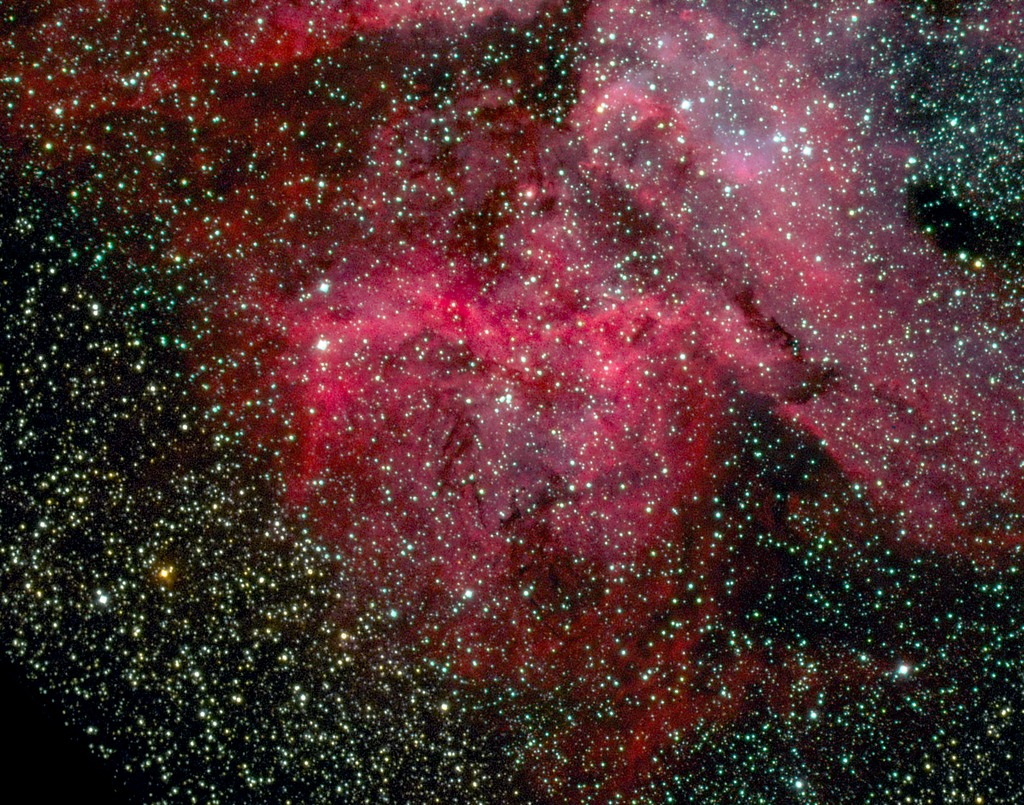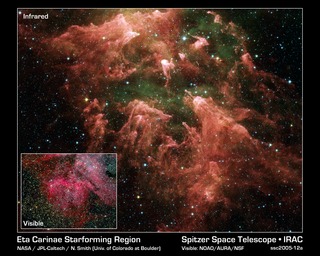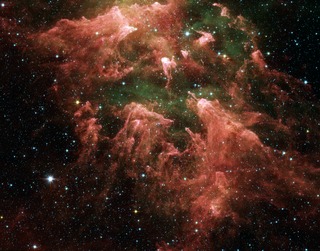
Credit: NOAO/AURA/NSF
Observation • May 30th, 2005 • ssc2005-12a2
ssc2005-12a2
This visible-light picture of the Carina Nebula comes from a National Optical Astronomy Observatory telescope in Chile at the Cerro Tololo Inter-American Observatory.
Eta Carinae is a behemoth of a star, with more than 100 times the mass of our Sun. It is so massive that it can barely hold itself together. Over the years, it has brightened and faded as material has shot away from its surface. Some astronomers think Eta Carinae might die in a supernova blast within our lifetime.
Ultraviolet radiation and stellar winds from Eta Carinae and its siblings have shredded the cloud to pieces, leaving a mess of tendrils and pillars.Eta Carinae's home, the Carina Nebula, is located in the southern portion of our Milky Way galaxy, 10,000 light-years from Earth. This colossal cloud of gas and dust stretches across 200 light-years of space. Though it is dominated by Eta Carinae, it also houses the star's slightly less massive siblings, in addition to the younger generations of stars.
About the Object
- Name
- Carina Nebula • NGC 3372
- Type
- Nebula > Type > Star Formation
- Star > Type > Variable
- Distance
- 10,000 Light Years
Color Mapping
| Band | Wavelength | Telescope |
| Optical | 440 nm | CTIO |
| Optical | 550 nm | CTIO |
| Optical | 700 nm | CTIO |
Astrometrics
- Position (J2000)
- RA =10h 47m 13.5s
- Dec = -60° 6' 8.2"
- Field of View
- 0.0 x 0.0 arcminutes
- Orientation
- North is 42.8° left of vertical






